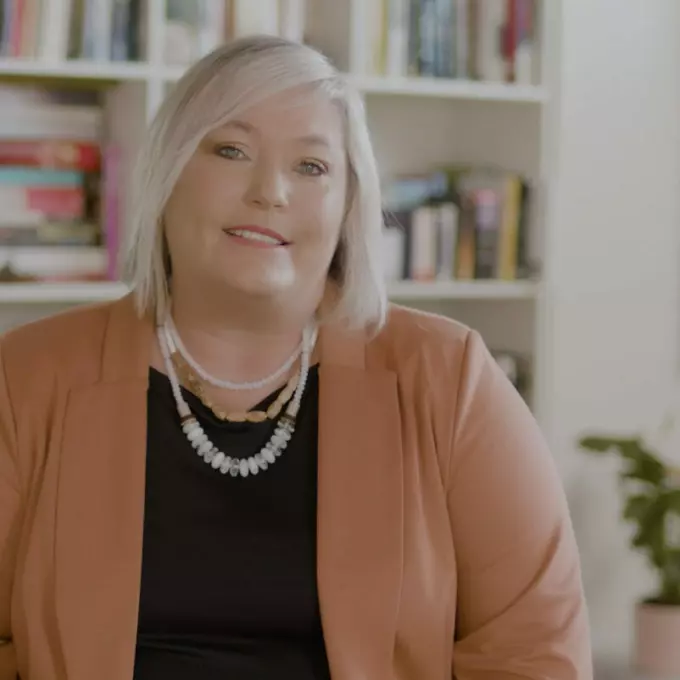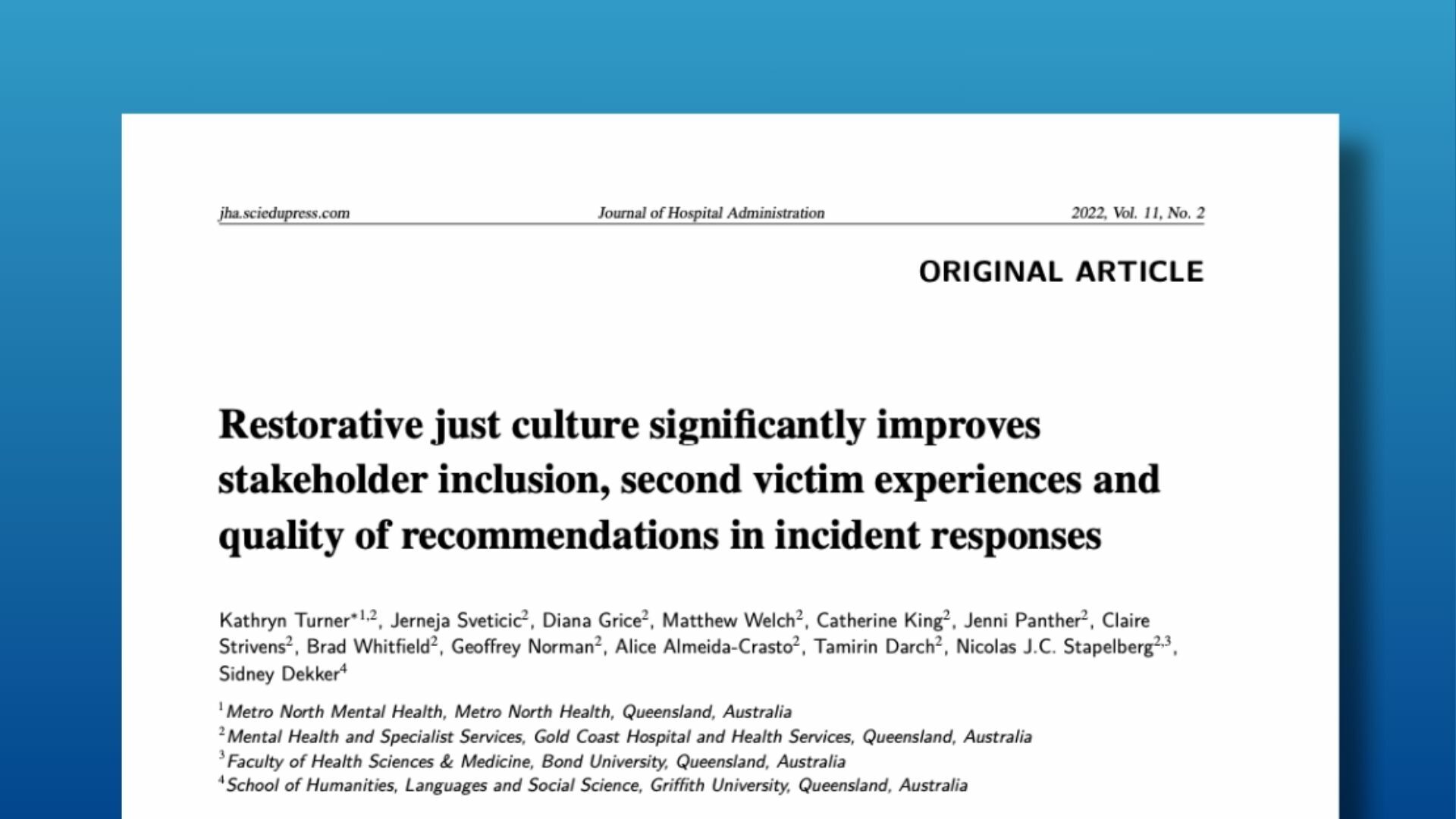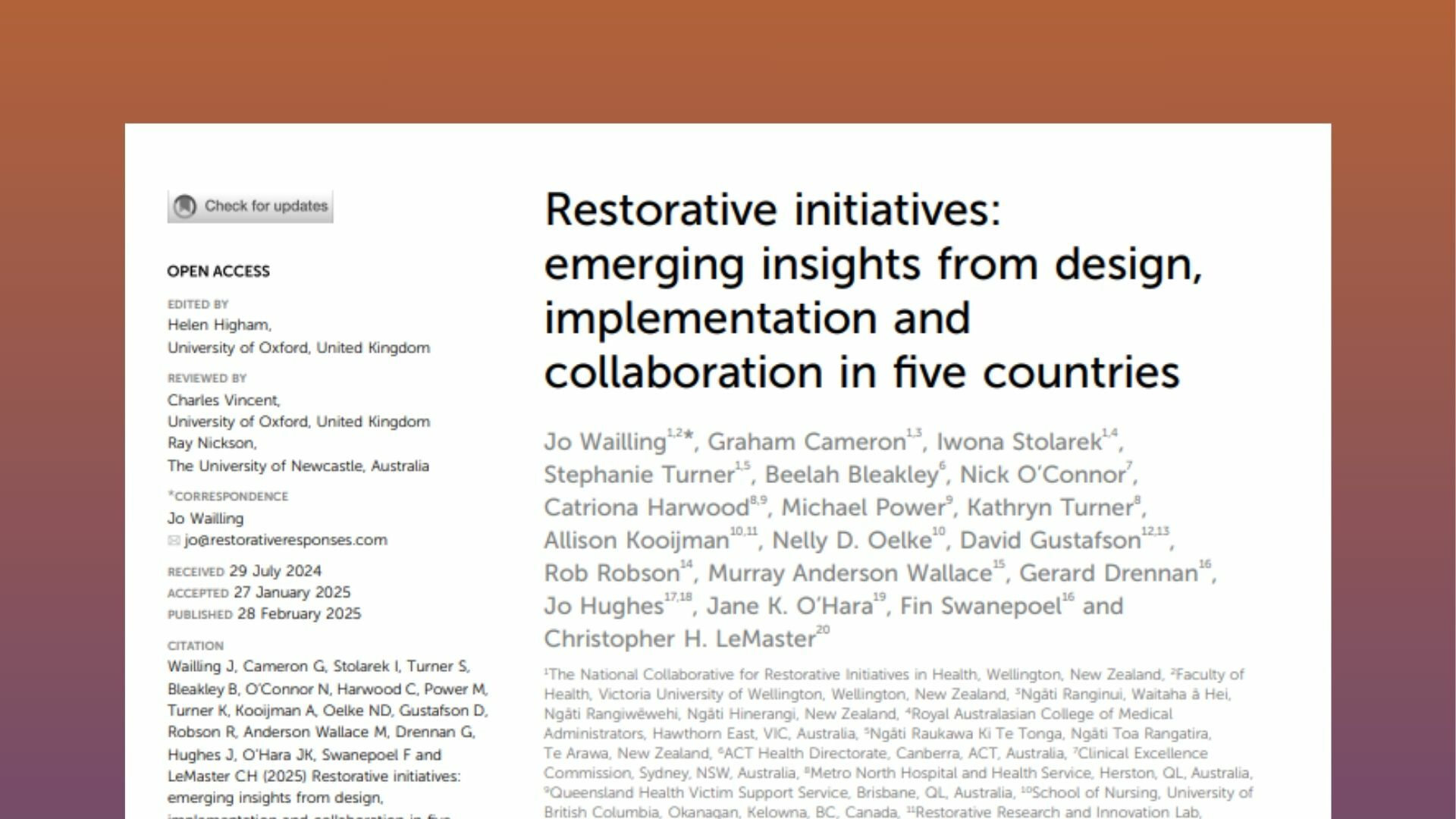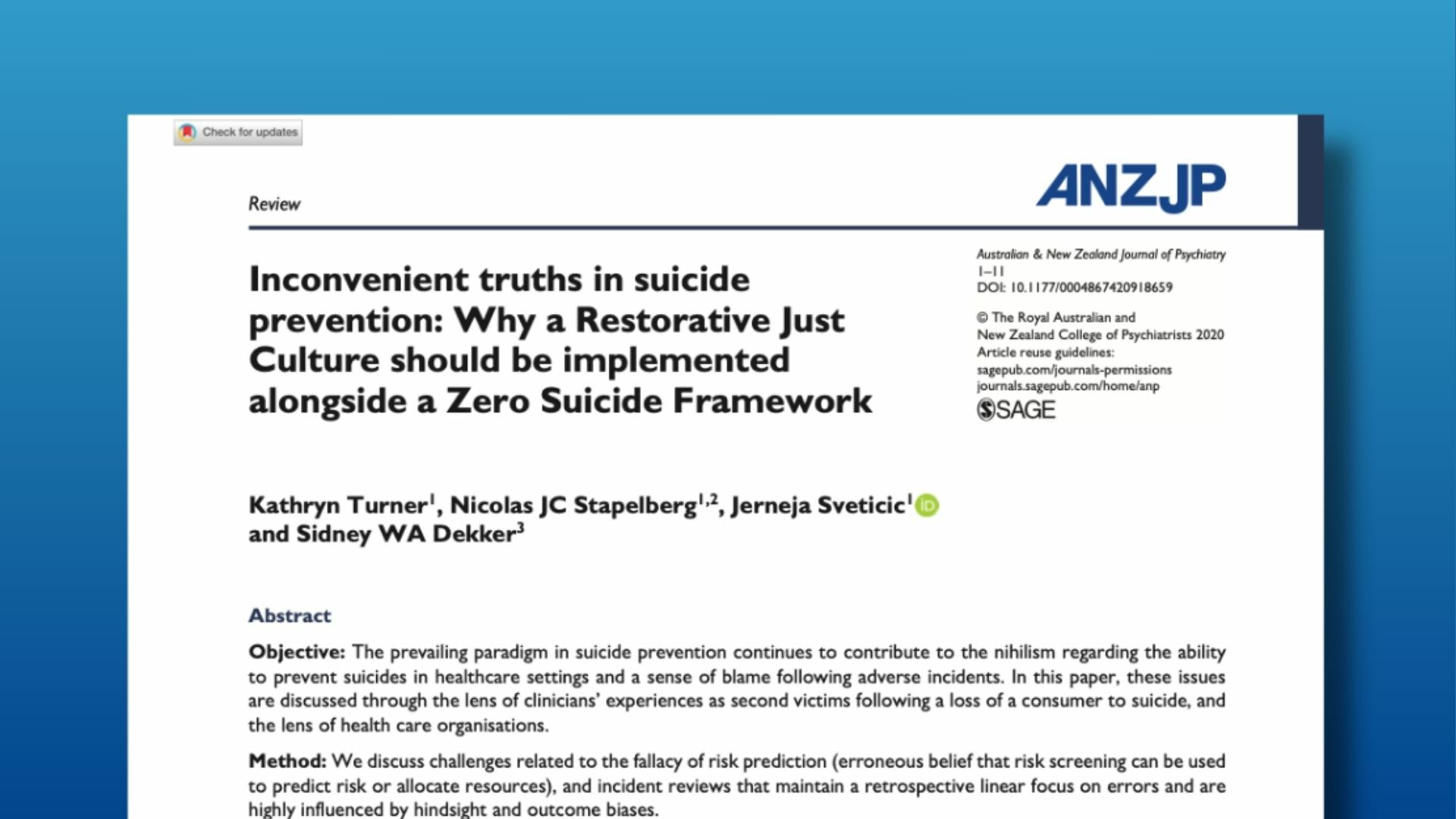
SafeSide Restore: Improving Reviews and Responses to Suicide
SafeSide Restore provides leaders with a network for collaborating with other external organizations to build a more restorative, just, and learning culture. Alongside a suite of educational resources, monthly working meetings supported by each other and subject matter experts will provide a space to share progress, unblock issues, and plan the next steps. A Restorative Just Culture approach to suicide-related incidents (Turner et al., 2020; Turner et al., 2022) engages the people most impacted to identify human hurts and needs while providing a path toward healing and growth through learning and improvement.
Leaders and organizations across various sectors can find value in the SafeSide Restore, with it being particularly beneficial to leaders in primary health, mental health, youth services, alcohol, and other drugs services, police, and military settings.
Shifting from “what went wrong?” to “who has been hurt?’
Why does implementing a Restorative Just and Learning Culture system matter?
Improved support for families
Families feel alienated from response processes, leading to further hurt and a desire to seek external investigations and inquiries. A RJLC process provides meaningful support to families and can improve processes based on lessons learned.
Staff retention suffers after critical incidents
Organizations lose valuable staff members after incidents if they don't provide proper support. This is particularly costly, given existing retention challenges in health sectors. Following suicides, it's been observed that staff often feel burnt out and leave.
Breaking the Cycle of Ineffective Recommendations
Poor stakeholder engagement leads to weak recommendations that people don't implement. This creates a cycle where problems recur because previous recommendations weren't effective or followed. Better engagement leads to better recommendations and implementation.
Equip Yourself with the SafeSide Restore's Resources
Network of Leaders
Once accepted, leaders join regular meetings with others in SafeSide Restore who are at various stages of leading change in their organizations to learn from and problem solve alongside each other.
Comprehensive Learning
SafeSide Restore gives you access to live, interactive education, self-paced modules, and materials that prepare you to confidently lead using a Restorative Just and Learning Culture approach.
Evidence Informing SafeSide Restore
SafeSide Restore's resources have been developed in partnership with international leaders and features videos and content that draws directly from their influential work.

Restorative Just Culture Outcomes

Restorative Initiatives in Healthcare: Moving from Blame to Healing

Addressing Inconvenient Truths in Suicide Prevention: A Call for a Restorative Just Culture
Frequently Asked Questions
Get answers to your most pressing questions about joining the SafeSide Restore
SafeSide Restore allows leaders to collaborate with other external organizations working to build a more restorative, just, and learning culture. Alongside a suite of educational resources, monthly working meetings supported by each other and subject matter experts will be a space to share progress, unblock issues, and plan the next steps.
Leaders and organizations across various sectors, including primary health, mental health, youth services, alcohol and other drugs services, police, and military settings, can find value in SafeSide Restore.
Unlike traditional models that often focus on what went wrong leading to feelings of blame, Restorative Just and Learning Culture encourages exploring the needs of those affected by incidents and fostering an environment of healing, learning, and improvement.
Once accepted, leaders join monthly meetings with others in SafeSide Restore who are at various stages of leading change in their organizations. Each member also receives access to resources to learn and then educate and advocate for change within their organizations towards a more Restorative and Just Learning Culture. This curated and growing library of resources for you to choose from and customize includes an educational video library, PowerPoint slides and talking notes for presentations, introductory eLearning modules to educate your teams and other resources.
The Restore Network’s resources have been developed in partnership with health services that have led the way in changing their culture. We have been fortunate to have many voices informing these resources which include the perspectives of the families affected, clinicians who have experienced the review process, and service leaders and executives who are committed to bringing about a Restorative Just and Learning Culture.
Find out how to start your journey
Support your team with the Restore Network's approach to incidents
